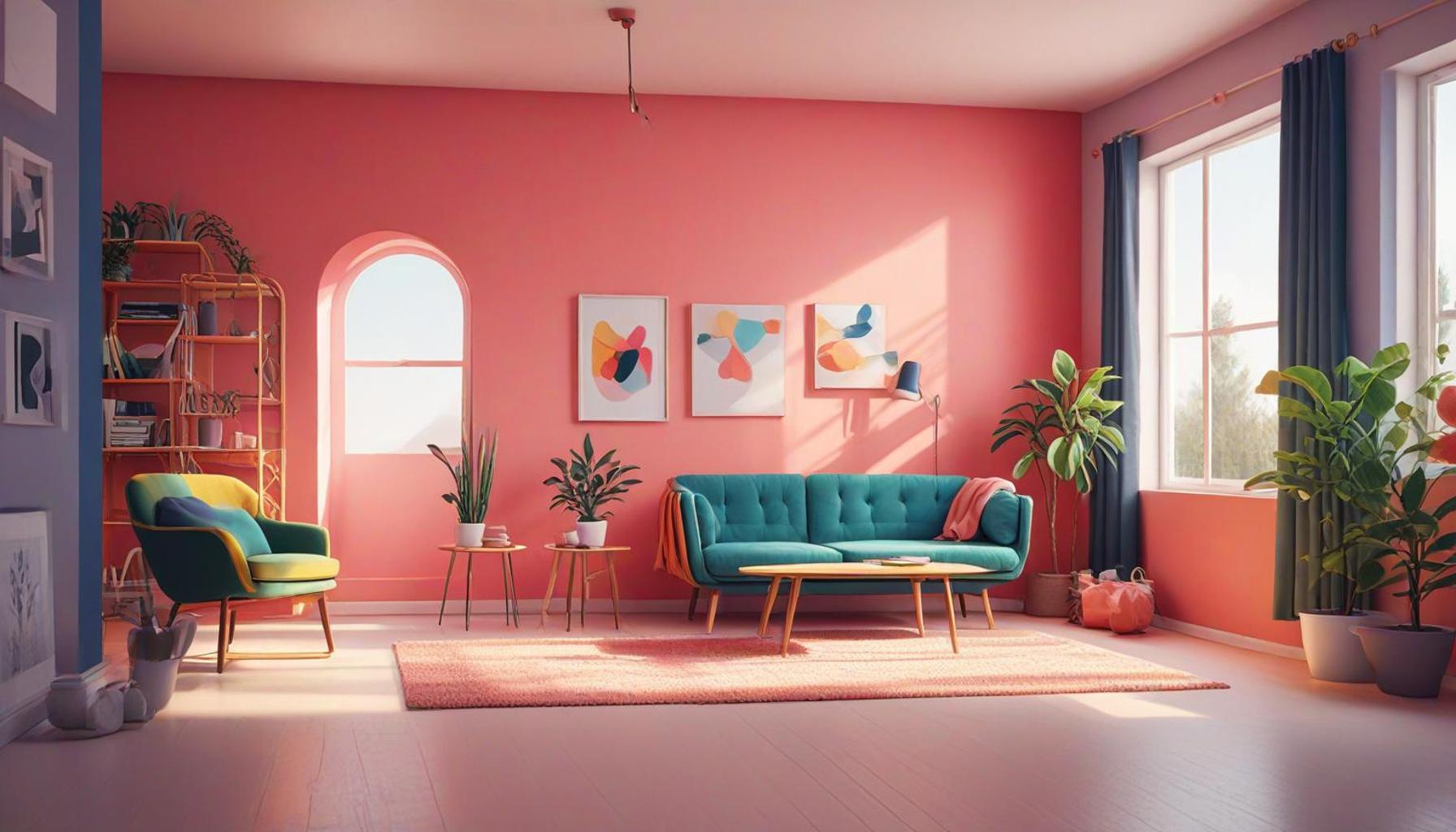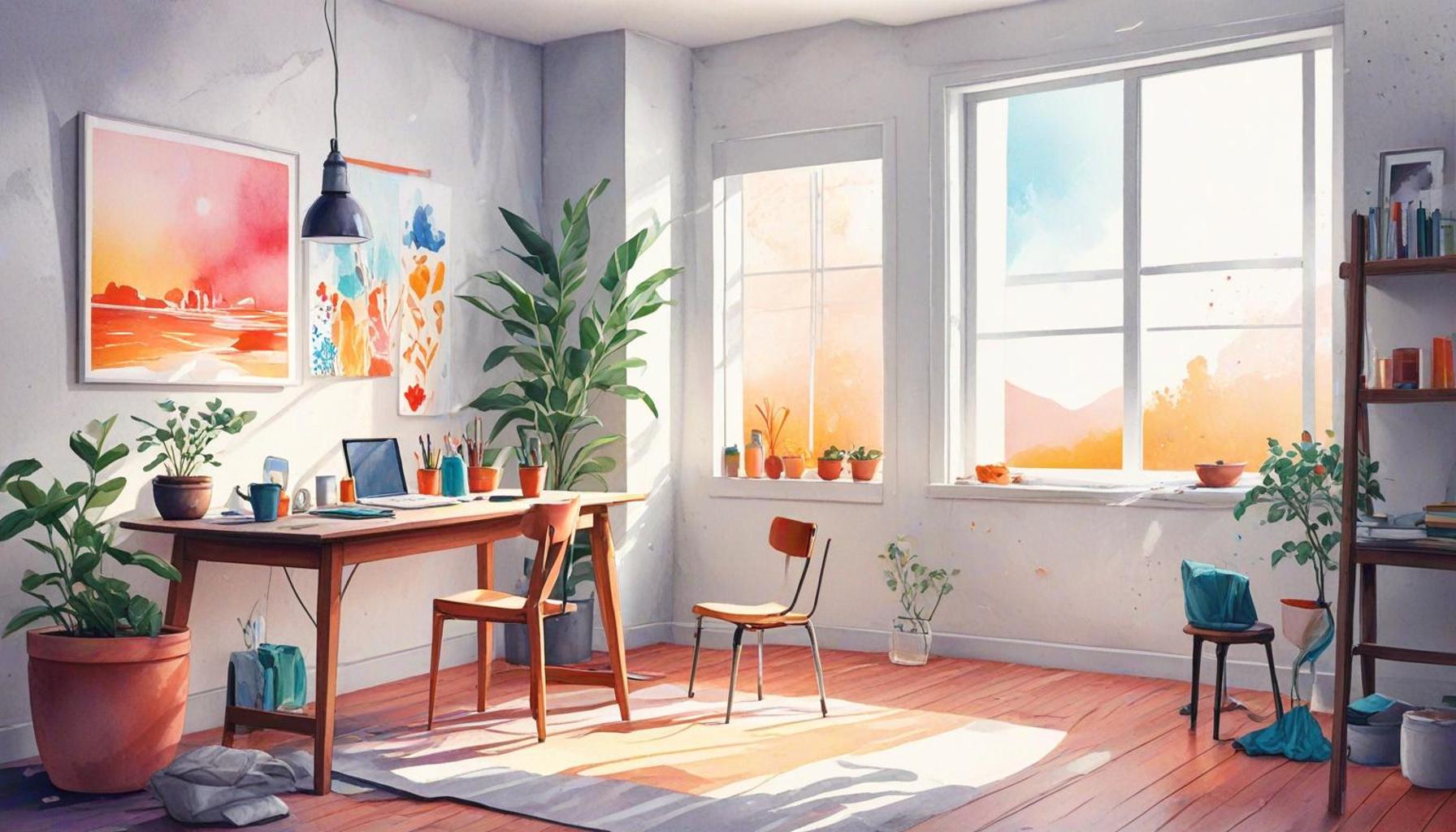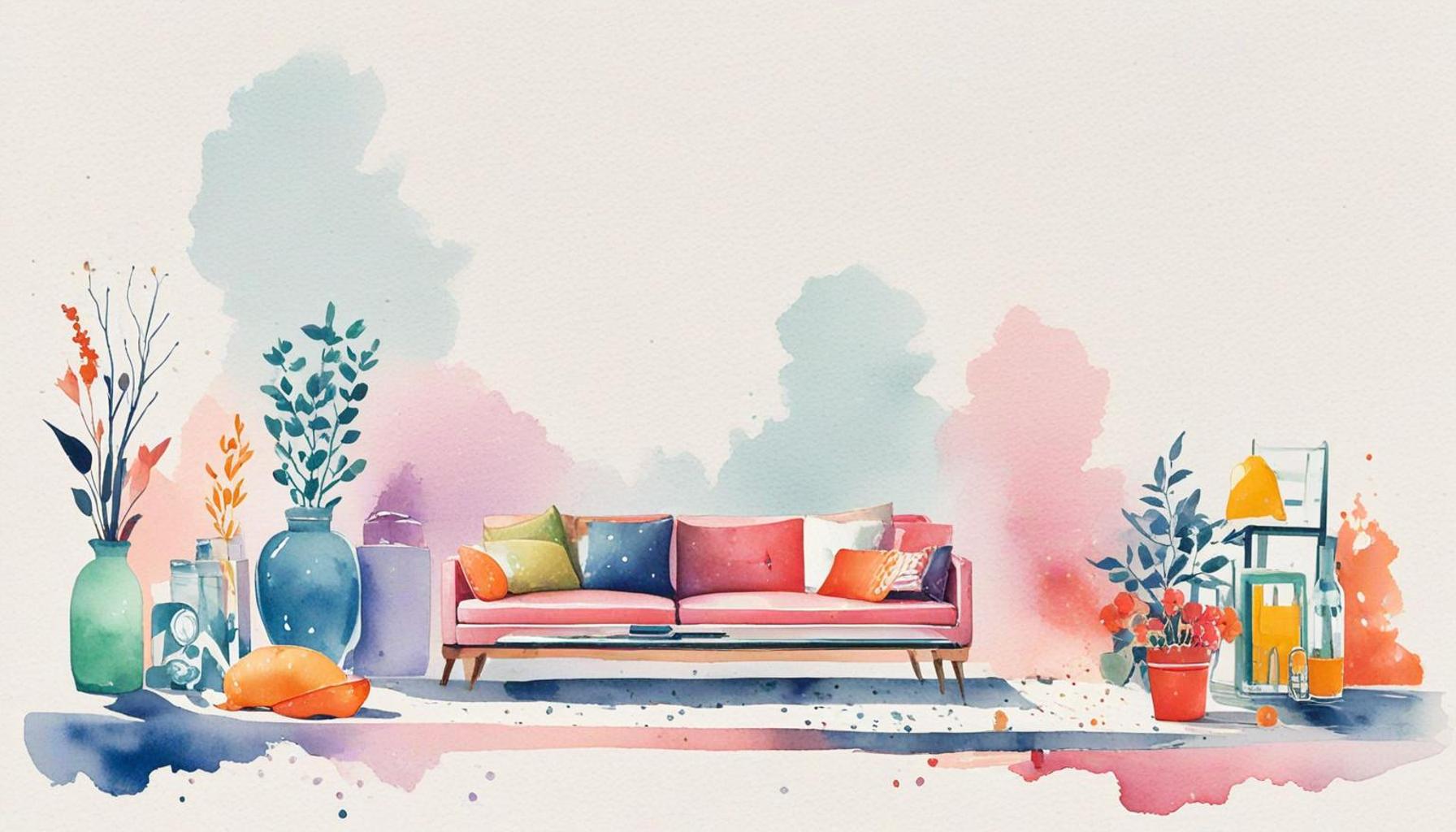The Importance of Intentional Design in Creating Minimalist Spaces

Understanding Intentional Design
In the modern world, where distractions abound and the pace of life accelerates, creating a purposeful environment has never been more critical. Intentional design emphasizes that every element within a space should serve a distinct function and contribute to an overarching narrative. This approach rings especially true in minimalism, where the art of simplicity intersects with mindful living. Each carefully selected piece not only enhances aesthetic appeal but also fosters a sense of tranquility, turning spaces into sanctuaries for the mind and spirit.
Why Minimalism Matters
Minimalism presents a compelling solution to the clutter and complexity of contemporary life. By stripping away non-essential items, individuals can attain a greater sense of clarity and purpose in their daily activities. The transformative power of minimalism offers numerous benefits, including:
- Reduced clutter: A streamlined environment simplifies decision-making tasks, allowing individuals to focus on what’s truly important. For example, a clean workspace can improve productivity, making it easier to tackle daily tasks.
- Increased focus: By fostering a calmer mindset, minimalism creates mental space for creativity and deep thinking. Studies have shown that a decluttered environment can enhance concentration, especially in high-pressure settings like offices or study areas.
- Visual appeal: With fewer distractions, a minimalist space radiates harmony and balance. This aesthetic simplicity can evoke feelings of comfort and relaxation, making homes feel inviting and cohesive.
Key Features of Intentional Design
Embracing intentional design necessitates a thoughtful approach to every aspect of the space. A few essential features to consider include:
- Thoughtful color palettes: Colors convey emotions; using soft, muted hues such as light greys, blues, or whites can significantly promote relaxation and peace within interiors. For instance, an all-white kitchen can create an impression of airiness, perfect for a restful gathering place.
- Functional furniture: Investing in multi-purpose pieces, such as a coffee table that doubles as storage, optimizes space efficiency. This practicality is especially valuable in urban settings where space may be limited, allowing residents to maximize their living areas.
- Strategic lighting: Incorporating natural light through large windows and well-placed mirrors can enhance mood and productivity. Studies suggest that exposure to natural light can lead to increased levels of happiness and a better overall quality of life.
As more people gravitate toward minimizing their belongings and streamlining their lifestyles, understanding intentional design’s principles becomes essential. This awareness not only influences the way individuals craft their homes but also significantly impacts how they inhabit and enjoy those spaces, paving the way for a more fulfilling life.
DISCOVER MORE: Click here to learn about the art of letting go
The Role of Intentional Design in Minimalism
As the quest for simplicity continues to inspire homeowners and designers alike, intentional design has emerged as a fundamental principle in the creation of minimalist spaces. This approach not only promotes a visually appealing aesthetic but also elevates functionality, making every item in a room serve a purpose beyond decorative appeal. When applied correctly, intentional design transforms spaces into reflections of individual lifestyle choices, where every piece plays a role in enhancing the inhabitants’ wellbeing.
Establishing a Purposeful Atmosphere
The framework of intentional design begins with the establishment of a clear purpose for each space. This means engaging in a thoughtful selection of furnishings, decor, and layout that aligns with the functionality intended for the area. For instance, in a minimalist living room, a sectional sofa may be chosen not just for its modern look but for its ability to facilitate social interactions, provide comfort, and contribute to a cozy ambiance. Essential to this process is alignment with personal values, as each design choice resonates with the occupant’s goals and lifestyle.
- Space zoning: Creating designated zones within an open-concept area can greatly enhance usability. By using furniture arrangement to demarcate spaces, individuals can establish distinct areas for relaxation, work, and socialization without the need for excessive partitions or clutter.
- Selective decoration: With the minimalist philosophy in mind, the practice of intentionally curating decorative items can prove invaluable. Emphasizing quality over quantity leads to the incorporation of only a few meaningful art pieces or plants, which can enhance the overall aesthetic without overwhelming the space.
- Personal storytelling: Each element should tell a story; incorporating personal artifacts or heirlooms transitions the space from a mere living area to a place filled with memories and significance. This approach also engenders a sense of connection and belonging, making the home feel truly unique.
Intentional design is not merely about minimalism for its own sake; it involves a deeper understanding of how environments can affect our mental and emotional states. Spaces that demand attention and care often create an energetically taxing atmosphere, while minimalist spaces designed with intent encourage stillness and presence. Such environments serve as sanctuaries, allowing occupants to unwind after a chaotic day, fostering an atmosphere conducive to relaxation and creativity.
The Practicality of Intentional Design
Beyond aesthetics, the practical benefits of intentional design in minimalist spaces cannot be overlooked. For instance, consider the advantages of a minimalist kitchen designed with intention: streamlined countertops, essential cooking equipment, and functional storage not only facilitate cooking but also maintain an organized environment. Such choices minimize daily friction, leading to a more enjoyable cooking experience and a cleaner ambiance.
In the end, the importance of intentional design in creating minimalist spaces extends far beyond mere visual appeal. It’s about crafting environments that resonate with individual values, enhance daily life, and foster a sense of calm amid the whirlwind of modern existence. By embracing intentionality, we embark on a journey toward more meaningful spaces, reflecting the ever-evolving narrative of our lives.
The Importance of Intentional Design in Creating Minimalist Spaces
Intentional design in minimalist spaces is not merely about reducing clutter but encompasses a broader vision that fosters clarity and purpose. This design approach emphasizes the thoughtful selection of elements, ensuring that every piece has significance and contributes meaningfully to the overall aesthetic and functionality of the environment. By prioritizing quality over quantity, intentional design captivates attention and evokes an emotional response from those who inhabit the space.
One of the compelling aspects of intentional design is its ability to enhance functionality. Spaces that are intentionally designed promote efficient use, allowing inhabitants to experience seamless transitions and interactions. The incorporation of multifunctional furniture—such as tables that double as storage or sliding partitions that adapt to varying needs—exemplifies how minimalism can compel creativity and innovation.
This design philosophy also advocates for emotional well-being. A minimalist space, intentionally crafted, can engender a sense of calm and tranquility. By focusing on essential elements and stripping away distractions, individuals find themselves more attuned to their surroundings, fostering an atmosphere conducive to relaxation and mindfulness. In this way, intentional design transcends aesthetics to touch on personal experiences and emotional resonance.
Emphasizing sustainability is another cornerstone of intentional design in minimalist settings. By selecting materials that are both eco-friendly and durable, designers contribute to environmental welfare while also ensuring longevity in their creations. This conscientious approach aligns perfectly with the minimalistic ideology—where less is more, and every element is worthwhile.
In essence, the art of intentional design within minimalist spaces invites deeper inquiry into how we relate to our environments, urging us to appreciate simplicity’s elegance while recognizing its potential to transform our lives.
| Advantage | Description |
|---|---|
| Enhanced Functionality | Intentional design maximizes the use of space while promoting seamless interactions and efficient flow. |
| Emotional Well-being | A minimalist setup fosters tranquility, helping individuals feel more centered and connected to their environment. |
| Sustainability Focus | Material choices in intentional design incorporate eco-friendly and durable elements that resonate with minimalism. |
Research shows that living in intentional, minimalist spaces can lead to increased productivity and improved mental health. As more individuals seek peace in their environments, the rise of intentional design is sure to influence contemporary architecture and interior design trends moving forward.
DISCOVER MORE: Click here to learn about the art of letting go
Creating Clarity Through Intentional Choices
In the pursuit of a minimalist lifestyle, the clarity that comes from intentional design cannot be overstated. Every item within a space should contribute to an overall sense of harmony, with thoughtful decisions made at each stage of the design process. This clarity is pivotal not only for visual appeal but also for encouraging mindfulness in daily activities.
Emphasizing Functionality without Compromise
Intentional design prioritizes functionality while navigating the fine line of aesthetic appeal. For example, when designing a bedroom, selecting furniture with built-in storage, such as a bed with drawers or a bench at the foot of the bed, allows for essential items to be stored out of sight. This not only maintains a clean visual expanse but also makes the space inherently more user-friendly. The essential goal is to ensure that every element exists to meet specific needs, enhancing the overall usability without sacrificing style.
- Flexible furniture: Adopting multi-functional furniture, such as extendable dining tables or modular sofas, can greatly increase utility in a minimalist setup. This flexibility allows residents to adapt their spaces for various activities without cluttering their environments.
- Natural lighting: The integration of natural light plays a significant role in intentional design. Large windows and strategic placement of mirrors can amplify light flow, making spaces feel more open and airy, contributing to an uplifting atmosphere.
- Textural Diversity: To avoid starkness in a minimalist environment, introducing a variety of textures can enhance depth and warmth. This can include soft fabrics for cushions, wood finishes for furniture, or natural fibers in rugs, all while keeping a cohesive color scheme that aligns with minimalism.
Furthermore, intentional design promotes a deeper connection with nature, often termed biophilic design. This approach integrates natural elements into living spaces, enhancing emotional and mental wellbeing. The introduction of indoor plants or natural materials, like stone or wood, can create a serene and grounding atmosphere, reminding occupants of the tranquility found outdoors.
The Impact of Minimalism on Mental Clarity
Intentionally designed minimalist spaces have been shown to have a profound impact on mental clarity. Studies have indicated that environments with less visual clutter can lead to improved concentration and reduced stress levels. As distractions are minimized, occupants can focus better on their tasks and enjoy a sense of calm, promoting overall mental health.
Intentional design fosters environments where creativity can flourish. An open, airy office space centered around effective organization allows for brainstorming without the penalty of chaos. By enhancing the environment through intentional choices, designers can construct stimulating workspaces that not only inspire innovation but also contribute to the overall satisfaction of those using the space.
As more individuals become aware of the benefits of intentional design, the minimalist movement is likely to influence how we perceive our living environments. Personalization, functionality, and emotional resonance are becoming key factors, ensuring that design choices lead to a harmonious balance between aesthetics and practicality. The application of intentional design can thus trigger a paradigm shift, encouraging more mindful living through the spaces we inhabit.
DISCOVER MORE: Click here to dive into daily rituals for a simpler life</p
Conclusion: The Power of Intentional Design in Minimalist Living
In summary, intentional design serves as the cornerstone of successful minimalist spaces, enhancing both aesthetic appeal and practical functionality. By consciously selecting every element within a living environment, individuals can achieve a sense of harmony that resonates deeply with their lifestyle and well-being. Through features like multifunctional furniture, generous natural lighting, and diverse textures, these thoughtfully curated spaces not only promote physical organization but also foster mental clarity and emotional grounding.
As we move towards increasingly complex lives compounded by digital distractions and constant noise, the shift to minimalism guided by intentional design principles is more significant than ever. It invites us to reevaluate our relationship with our possessions and encourages mindful consumption, leading to spaces that reflect our values rather than simply our tastes. In embracing such a philosophy, we can create environments that not only inspire creativity and productivity but also cultivate emotional wellness.
Moreover, as more designers and homeowners embrace the potential of intentional design, the impact multiplies, leading to a widespread appreciation for minimalist aesthetics across diverse demographics. Whether you’re designing a compact urban apartment or a spacious suburban home, the principles of intentional design can bring clarity, functionality, and a profound sense of peace to any space. Ultimately, the journey towards a minimalist lifestyle enriched by intentional design decisions not only transforms physical spaces but also has the power to influence our overall well-being, paving the way for a more mindful existence.


